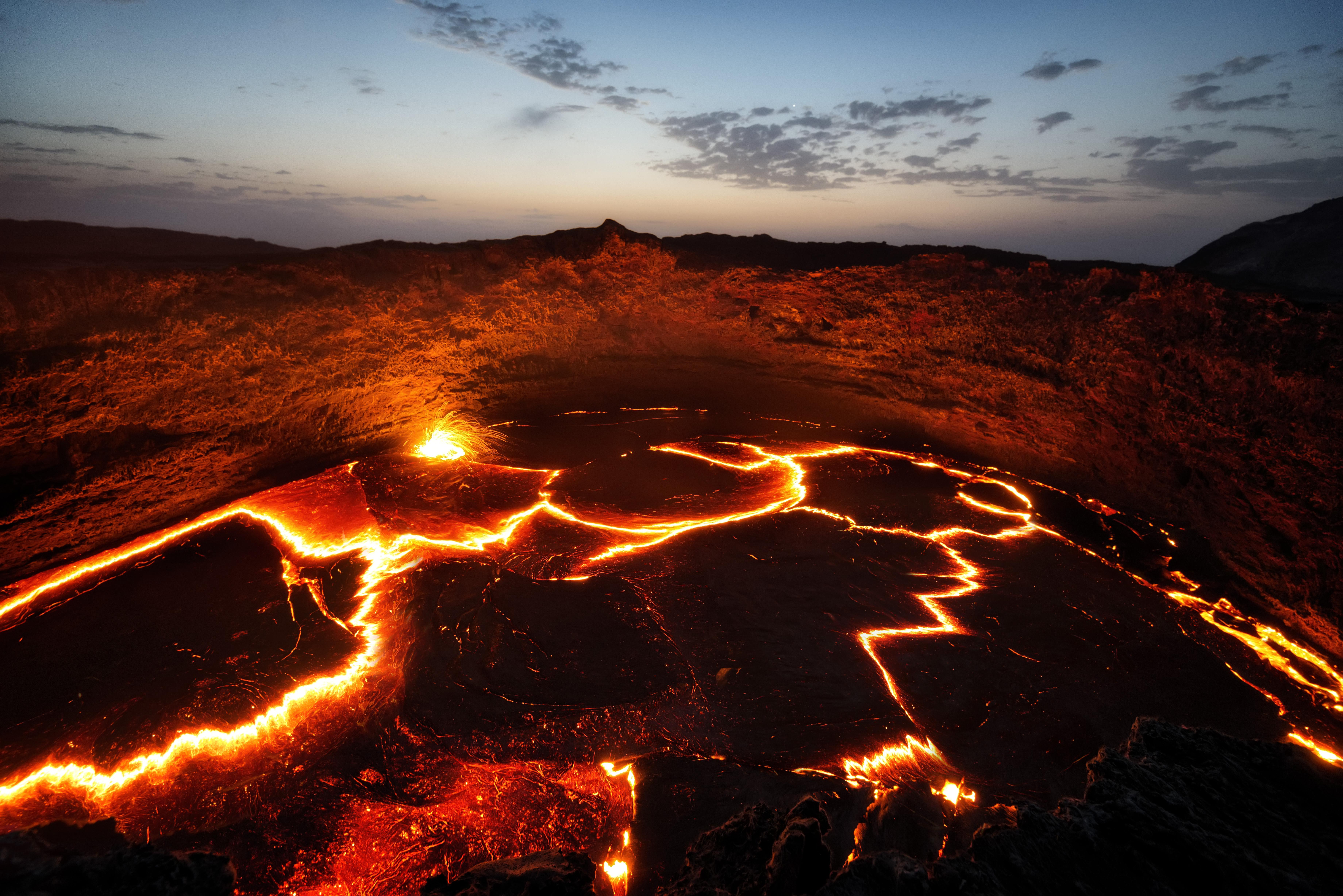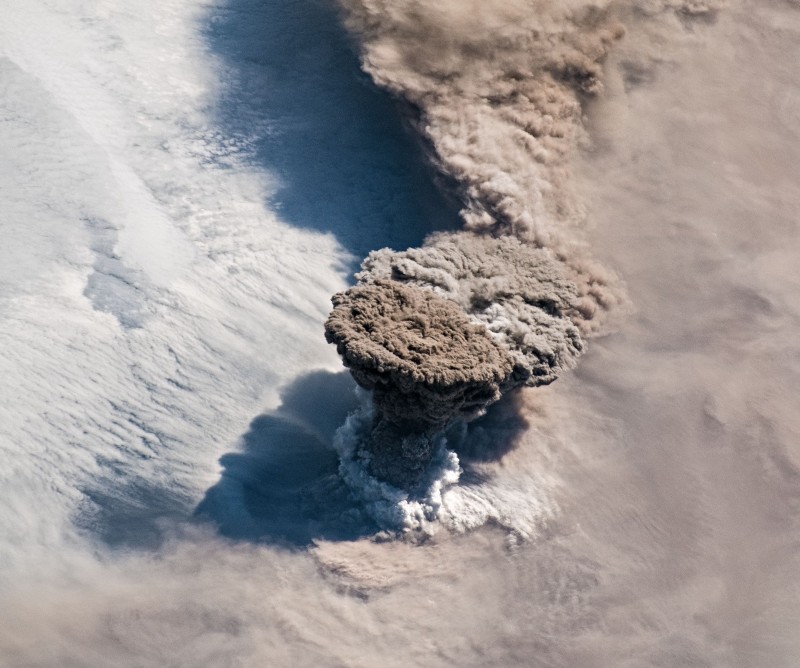Active volcanism in the Kuril Islands
Image courtesy of KVERT, taken by L. Kotenko on Marhc 18, 2009.
To me, one volcanic arc about which I wish I knew more is the Kuril-Kamchatka arc. I’m well aware of how active it is, with giants composite volcanoes like Bezymianny, Koryak, Klyuchevskoi and many, many others. This arc of volcanoes, although in a sparsely populated part of the world, is important to monitor due to its proximity of air travel lanes to Asia. So, any time I find out a volcano in this area – usually one that I was previously unfamiliar – erupted, I am excited.
Today’s example: Ebeko. Never heard of it. Yet, it is erupting here in 2009, and rather impressively at that. KVERT (Kamchatkan Volcanic Eruption Response Team), a cooperative with AVO that monitors the Russian volcanoes of the Kamchatka Peninsula and the Kuril Islands, releases some amazing pictures of this volcano in action during January through March of 2009. Most of the activiity pictured are either steam explosions with minor ash or the crater steaming away, this marks the first activity at Ebeko since 2005. The explosions produced ash fall (0.1-0.2 cm) in Severo-Kurilsk on March 13, 29 and 31.
Ebeko itself is on Paramushir Island in the Kuriles. The island is home to at least 5 active volcanoes (Ebeko, Chikurachki, Tatarinov, Karpinsky and Fuss Peak) and at least 23 known volcanic systems of varying age, so it is no stranger to volcanic activity. Few people live on the island, but it is a strategically important island south of Kamchatka between Russia and Japan. Ebeko has been intermittently active over the last 100 years and has active hot springs and fumaroles in one of its craters. It is also a “somma volcano”, which simply means that it is a volcano that built up inside the caldera of previous volcanism (other examples are Vesuvius and Teide, amongst many others). As expected from any volcano with such vigorous hydrothermal activity, many of the eruptions at Ebeko are phreatic – explosions due to the interaction of water and magma – producing lots of steam and some minor ash. However, in 1989, the volcano produced lahars and tephra during the VEI 2 eruption.
The current activity at Ebeko will be monitored using mostly satellite monitoring and occasional visual observations from Paramushir Island, along with any seismic data that can be collected from the volcano-seismic network in that part of Russia.




